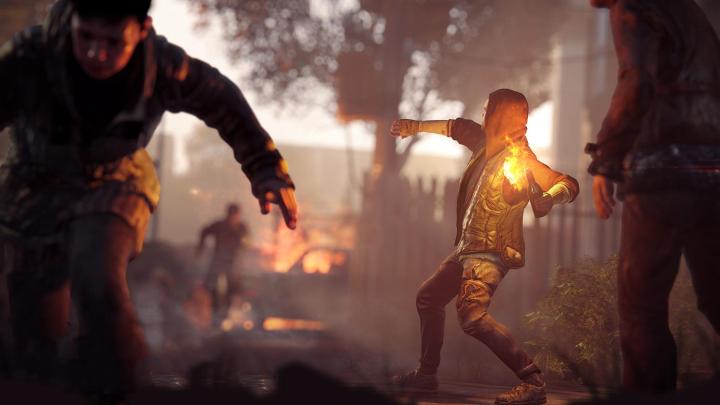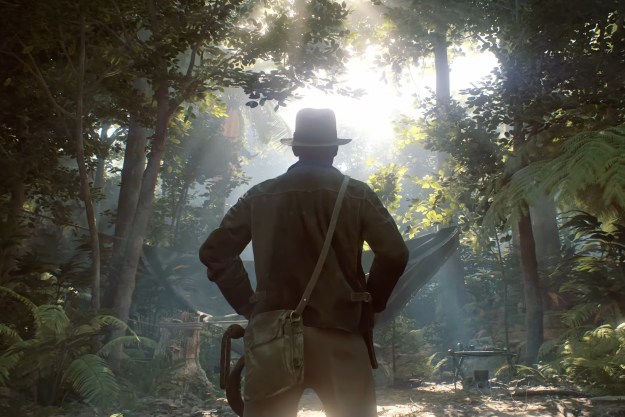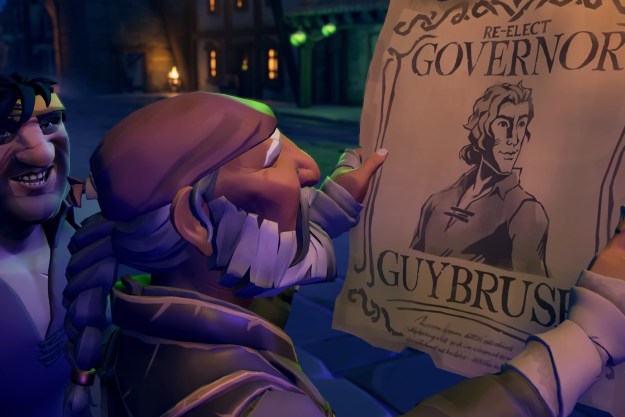
How would you respond if you found yourself living in a conquered nation? Crytek Nottingham asks that very question in Homefront: The Revolution, putting players into the boots of Philadelphia resident Ethan Brady as he brings the fight to North Korean occupiers. America is the land of the free no more, but Ethan and his fellow resisters intend to prove that it is still very much the home of the brave.
We’ve been here before. Kaos Studios made similar promises for 2011’s original Homefront, but the earlier game’s rough design failed to deliver. The Crytek studio’s second attempt — which bears nothing more than a narrative link to its predecessor — carries more of the newer studio’s DNA, with an open world presentation and an intended freeform approach to play designed to give players the sense that they’re active participants in a revolution.
It’s early days yet for this 2015 release, but a lot of the core ideas seem to be reaching for the right buttons. Here’s what we know so far.
Story/Concept
Fight the system. The original Homefront introduced a world in which aggressive North Korean forces invaded and successfully defeated the United States, overwhelming the larger population’s resistance with superior technology. The story opens four years after the events of the previous game, long enough for the occupiers to have established a strong foothold, complete with widespread forced labor camps and an in-country leadership.
The seat of the North Korean command structure is based in Philadelphia, a strategically relevant chunk of territory that — as the site of the Declaration of Independence’s signing — also carries no small amount of symbolic value for the conquered peoples of the United States. Philly is also the home of Ethan Brady, Homefront: The Revolution‘s unlikely everyman hero.
Crytek isn’t ready to discuss much about Ethan or his motivations as a freedom fighting, but we do know that igniting a revolution is a core focus for this game.
Gameplay
You against the world. While the Crytek DNA is immediately evident in Homefront: The Revolution‘s open world, the one-man-army super-soldier that’s been so well-established in the Crysis series is replaced here with a protagonist who is badly outgunned at all times. Philadelphia is realized as a living, evolving world that changes as you foment more and more unrest among the local population. A lot of the ideas for executing on this are still in the conceptual stage, but we’ve got a good sense of the intent for the finished product.
Scrounging for parts and employing makeshift devices is a key facet of the gameplay.
Staging a revolution isn’t exactly a simple affair. Over the course of the game, completing various tasks — everything from destroying security cameras to commandeering Drone Control Towers — earns you Uprising Points that serve as a numerical accounting of how effective your efforts to raise a revolution are. This translates to how the resistance plays out in the wider world.
At the lowest Uprising level, U.S. citizens are wholly oppressed; you’ll come across emergent events that provide opportunities to free abused captives from their captors, for example. At higher levels, the resistance becomes more overt. Food trucks that once attracted crowds of hungry citizens in the yellow zone become targets for rebel aggression. Protests spring up outside of key enemy facilities, drawing out defensive forces. In gameplay terms, increasing your Uprising Level opens up access to new parts of the world.
Guerrilla games. Guerrilla warfare is the key to survival in Homefront: The Revolution. It’s impossible to take the enemy on face-to-face. Even in a yellow zone, a triggered alarm is not something to be resisted. Face down enemy reinforcements, and you’ll just have more to deal with. Escape and evasion is key. Hit-and-run tactics aren’t just the best strategy; they’re your only strategy.

For our hands-off look at an early section of the game, a Crytek staffer demonstrated how Ethan and his allies go about freeing captives from a KPA prison. With the demo’s world at Uprising Level 1, U.S. protestors have gathered in front of the police facility, which causes KPA forces to open the front gates and dispatch armed guards. The troop presence is but an obstacle, however; the open gates are what’s key here.
The beaten-down U.S. resistance has little in the way of supplies, so scrounging for parts and employing makeshift devices is a key facet of the gameplay. In this case, Ethan uses parts he’s found to build a remote-controlled car and an IED (Improvised Explosive Device). He then combines the two and steers the explosives-enhanced RC car right up to the facility’s front door, using an approaching enemy vehicle as cover. The result explosion triggers a prison break, releasing more resistance fighters into the world and adding to Ethan’s Uprising Points total.
The makeshift warfare extends to the U.S. resistance’s arsenal as well. Homefront: The Revolution employs a weapon customization that is practically identical to the one seen in the latest Crysis games, but players won’t have 15 to 20 guns to choose from for taking on KPA forces. Instead, weapon mods will extend all the way to the body of the firearm, affecting performance in a number of ways. For example, one mod turns the M4 assault rifle into a high-ammo, low-accuracy Light Machine Gun. Each weapon has two traditional mods and one more “exotic” mod, that could be something like incendiary ammo for a shotgun or a pump-and-shoot pneumatic pistol.
Reach out and torch someone. Crytek’s goal is to stay away from making Ethan or his allies ever feel like super-soldiers, but the mid-21st century setting allows for some high-tech trappings. Chief among those is Ethan’s smartphone, a multipurpose device that serves as a portal to a number of important tools. There’s all the basic stuff you’d expect from a smartphone — camera (for marking enemies and points of interest), messaging (a quest log), and a map (self-explanatory) — as well as a couple of other, more powerful tools.
The Drone Control app allows you to commandeer the unmanned enemy air vehicles that own the skies, with an increasing array of them becoming available as you successfully tackle more Drone Towers. The Seeker drone, for example, is good for gathering intel and little more than that, but the weaponized Wolverine (a can’t-miss nod to Red Dawn) could potentially turn the tide of a battle.
There’s also a Resistance Support app, that ties to the game’s Uprising Level. Resources are limited during the early days of the revolution; Ethan can call in freedom fighters to help keep enemy forces at bay, but that’s about it. Later on, you’ll be able to order distraction missions in which friendlies plant bombs in strategic locations to draw KPA forces away from designated targets. You’ll even be able to call for assassinations of select personnel. The details on how all of this works remain unclear (probably because the systems that support these features are still in development), but the intended design at least sounds promising.
Presentation
Realizing the revolution. As a next-gen console and PC game, Homefront: The Revolution looks sharp even in its presently early state. Philadelphia looks the part of a police state, with spotlights and security checkpoints all over, and high fences preventing the oppressed citizenry from gathering in too-large numbers.

The environments drip with interactive details, from crumbling points of cover to piles of bricks that can be used to distract. Crytek even established a graffiti-styled “hobo language,” meant to communicate various points of interest to players. While there’s likely to be some kind of more video game-y checkpointing system in place to help players mark destinations in the final game, the intent is to establish a sort of revolutionary’s playground in which you’ve got to find your own way to instigating unrest.
Takeaway
In its present form, Homefront: The Revolution is big on promise and short on execution. The distant and still-nebulous 2015 release date speaks volumes here, and the vertical slice that Crytek assembled for E3 attendees works better as a proof of concept pitch than a demonstration of individual systems that help to flesh out the experience.
After seeing the game and chatting with one of the studio’s lead designers, we walked away feeling encouraged by the long-term plans for delivering on this idea entail. Now the studio’s just got to deliver on its many promises.






